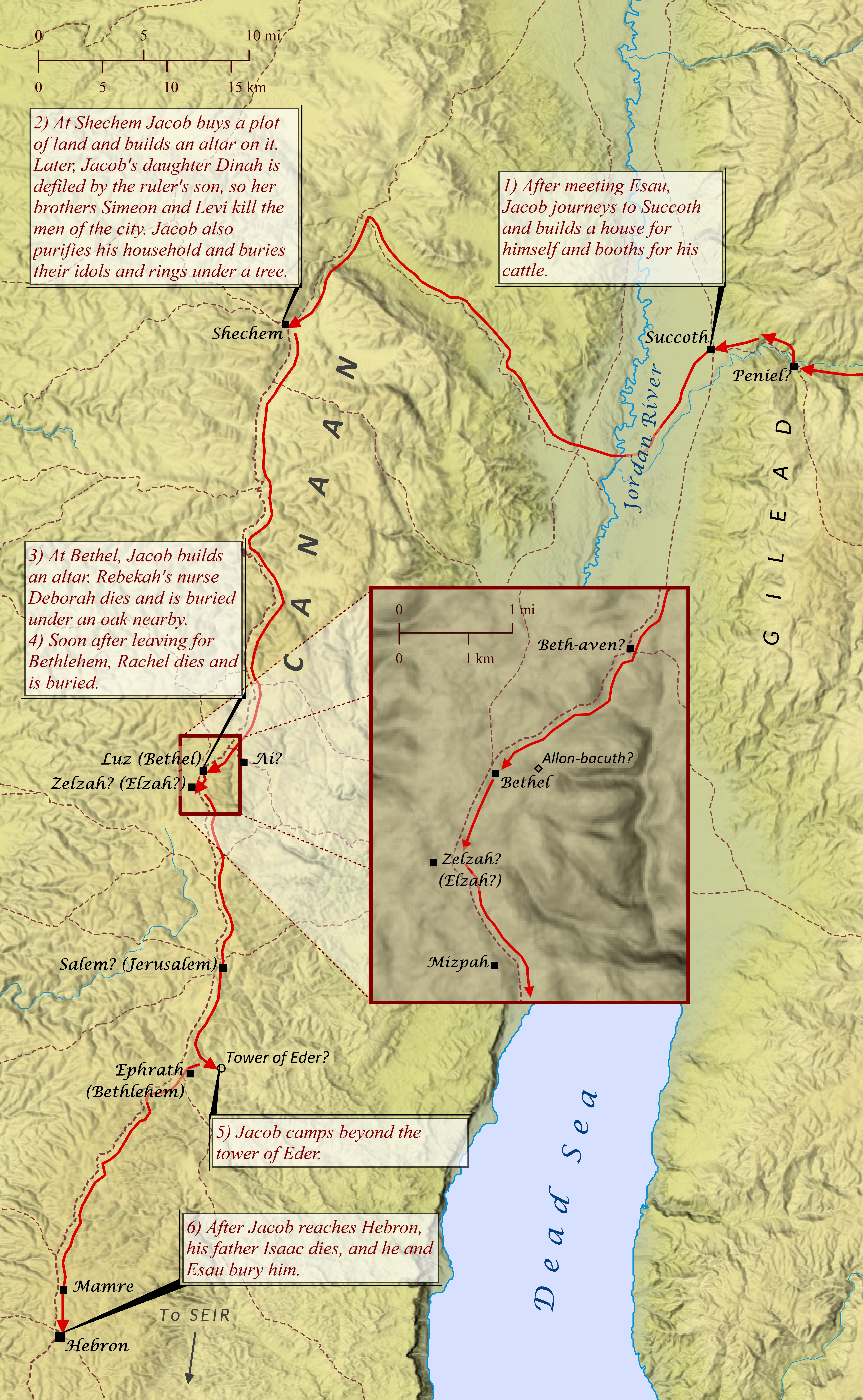
Jacob Travels to Southern Canaan
Genesis 32-36
As with many of the stories of the Bible, the events of Jacob’s life are often misunderstood by readers as disjointed pericopes arranged primarily for theological and cultural purposes. Because of this, readers often fail to see that these stories follow a clear geographical progression of the patriarch throughout the land of Canaan. This realistic and coherent geographical framework behind the stories gives strong support to the belief that these stories are authentic, historical accounts of the experiences of Jacob and his ancestors. The overall framework for virtually all of Jacob’s stories is very simple: Jacob is born and raised in southern Canaan but comes into conflict with his twin brother Esau, so he flees to Paddan-aram in Mesopotamia (Genesis 25-28; see “Jacob Goes to Paddan-Aram” map). There he builds a large family and great wealth (Genesis 29-30) and eventually returns to southern Canaan, likely retracing the exact steps he followed when he fled (Genesis 31-35; see also “Jacob Returns to Canaan” map). During this time, Esau moves to the hill country of Seir, likely just south of southern Canaan (“Edom and the Land of Seir” map), and establishes his own family there, giving rise to the nation of Edom (Genesis 36). Though the primary intent of Jacob’s return was no doubt to resettle in Canaan, comments made during his reunion with Esau near Peniel may reveal that he also intended to travel even further to Seir to visit his brother there (Genesis 33:12-14). After crossing from Mahanaim to Peniel in Gilead, Jacob reunites with Esau and settles in Succoth for a time and builds a house for himself and booths for his cattle. He eventually crosses the Jordan River and enters Canaan, stopping first at the ancient city of Shechem. There Jacob’s daughter Dinah is defiled by the son of the region’s leader, and her brothers take revenge by killing all the men of the city. Thus, Jacob is forced to leave, but first he calls upon all his household to purify themselves. He collects their idols and rings and buries them beneath a tree in Shechem. Upon reaching Bethel, Jacob builds an altar and calls it El-bethel. The nurse of Jacob’s mother Rebekah also dies at Bethel and is buried under an oak below the town, leading them to call the place Allon-bacuth (“oak of weeping”). Jacob and his family leave for Bethlehem, but very soon after they start the journey Rachel gives birth to Benjamin and then dies. Jacob buries her along the way, apparently near a place called Zelzah (or perhaps Elzah; see 1 Samuel 10 and “Saul Search for His Donkeys” map). Jacob continues on and camps beyond the tower of Eder, perhaps near Bethlehem, since that seems to have been his original destination. Finally Jacob reaches Mamre and Hebron. Soon after this Isaac dies, and Esau and Jacob bury him. The story of Jacob’s journey ends at Genesis 35, and we are not explicitly told if Jacob traveled even further to Seir. Genesis 36, however, catalogs the descendants of Esau, the Edomites, perhaps indicating that Jacob did indeed fulfill the intentions he stated in Genesis 33:12-14.